finally, previously, meanwhile...
: the role of narratives and their notion of time in architecture

THE NATURE OF NARRATIVES
We create stories to help us reorganize the chaoticness of time. The events we experience and the memories we make of them then become key ingredients to our lives’ narratives. The temporary becomes more permanent as patches of events consolidate into longer-form narratives which are much more memorable and comprehensible to the human mind.
It is important to understand that our perception of the world comes in two formats: the constructed narrative and the natural narrative. One we learn from the structure the world provides, how the world works, from the physical world. Whereas the latter we learn through experience, as the kind of knowledge that is embedded in our daily conversations and our story-tellings. In other words, “We use stories to make sense of our world and to share that understanding with others.” 1
Atlas of the Destruction of Aesthetics finally, previously, meanwhile ...
But what does a story need? A character, a setting and a plot that drives the narrative- an equivalent to humans, space, time and their activities within it. Often, these factors get so intimately bound up together that it is in our best interest to try organizing it- with attempts of creating timelines, time frames and relying on time as a rule. At certain times, we rely on space, recalling events by remembering where they took place. At other times, we rely on a combination of both time and space to firmly validate the existence of a memory.

To understand the link between space and time, we first need to look into scientific theories most acknowledged. In 1905, Einstein’s Theory of Special Relativity had opened up new doors on how we look at space and timestating that neither of them are independent. Time is perceived differently through different spatial frames of reference. Therefore, space and time are aggregated into a single continuum. We no longer witness a world composed of 3 dimensional axes, but one that includes the fourth dimension of time. 2

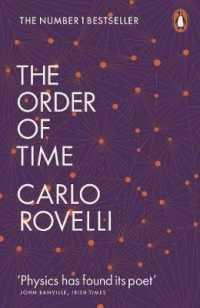
“Henceforth space by itself and time by itself, are doomed to fade away into mere shadows, and only a kind of union of the two will preserve an independent reality.”
Hermann Minkowski, mathematician Raum und Zeit. “File:Hermann Minkowski Portrait.jpg.” Wikipedia Commons, 10 Jan. 2019, https://commons.wikimedia.org/ wiki/File:Hermann_Minkowski_Portrait.jpg

295 Atlas of the Destruction of Aesthetics finally, previously, meanwhile ...
1 Rovelli, C. (2019). Order of Time -- Paperback [Digital image]. Retrieved September 27, 2020, from https://thailand. kinokuniya.com/bw/9780141984964
2 Neurokinetikz. (2020, January 29). The Holographic Universe [Digital image]. Retrieved September 27, 2020, from https://medium.com/@neurokinetikz/the-holographic-universe-21089d68e460
3 Exercise 4: Storyboards [Digital image]. (n.d.). Retrieved September 27, 2020, from https://www.khanacademy.org/ humanities/hass-storytelling/imagineering-in-a-box/lesson-2-designing-attractions/a/exercise-4-storyboards
Space-Time Diagrams, as the name suggests, are used for establishing a relationship between space and time.
1. Stack scenes on top of each other
2. Look at them from top view
3. Identify the stationary and dynamic objects, color-code them
4. Draw a line connecting each object’s position on their respective scenes. This is called a worldline.
Vertical Line = Static Slanted Line = Dynamic

296 Atlas of the Destruction of Aesthetics finally, previously, meanwhile ...
The trees are static from the runner’s frame of reference.
The runner is static from the tree’s frame of reference.
Within the seemingly endless space-time continuum, we can begin to comprehend them as a series of events defined by their spatial and durational qualities. For instance, “I had sushi” wouldn’t make as much sense as “I had sushi at Central World yesterday.” Likewise, an event wouldn’t be as finite if it lacks the description of its place and time. However, if an event’s place and time are fixed, the way we stitch them together is not, and with that brings different forms of narratives.
REGARDING THE NOTION OF TIME
The way we tell stories evolves as technology advances. Therefore, the way media consumption shifted started this fundamental change in how we comprehend and perceive the world. The rise of Hollywood was as powerful in the early 1900s as the invention of social media was to the early 2000’s. The invention of nonlinear media consumptionthe world wide web has brought upon the simultaneous integration of text, photos, videos and audio in one place as we know today.
Interestingly, during the rise of cinema, the invention of videoediting had given us the almighty power to splice up and rearrange time as we wish. Consequently, different types of narratives are visualized as ways we can navigate and manipulate time through fictional mediums. In storytelling, there are various types of narratives. For a start, we’ll be exploring three of them: linear structure, circular structure and sporadic structure. Let’s look at them through examples of popular movies.

Linear Structure-- chronological
These movies follow a linear arc, much like the classic progression from exposition, rising action, climax, falling action to resolution. The plot often showcases an equilibrium at the beginning, a conflict mid-story and reaches a new equilibrium at the end. Characters experience time in a past-present-future manner.

E.g. 10 Things I Hate About You(1999), Before Sunrise(1995)







297 Atlas of the Destruction of Aesthetics finally, previously, meanwhile ...
Circular structure-- partially chronological
These movies unfold as a series of events that start and end on the same event, almost presenting a satisfying dejavu effect. Their plots often include the repetition of setting, event or partial reminders of an event to hint us toward the end of the story. An equilibrium starts and ends at the same place and time.

E.g. Eternal Sunshine of the Spotless Mind(2004), (500) Days of Summer(2009)









Sporadic Structure-- non-chronological

These movies do not oblige to the rule of time. The events are spliced up and rearranged in a spontaneous manner, giving us a sense of mystery and at times, thriller. The plot stitches a series of events together, so that finding the equilibrium spot is only possible after we are done watching.

E.g. Memento(2000), Tenet(2020)

298 Atlas of the Destruction of Aesthetics finally, previously, meanwhile ...
finally, previously, meanwhile ...

299 Atlas of the Destruction of Aesthetics
Burney, Greg. “Memento Scene Timeline.” Visually, 23 Feb. 2020, visual.ly/memento-scene-timeline?action=likes.
Certainly, video-editing has become one of the most apparent ways of bending/ morphing/distorting time as we see it. Studying the different types of narratives gives us a clearer idea of how time can be split, distorted or entirely neglected. Paradoxically in a time-based media, time can be used as an anti-constraint, or an opportunity, for us to impose a new way of temporal perception.
DEPRIVATION OF TIME
As stated, we need both time and space in order to validate our memories. So, if temporal perception can be manipulated (one way through video-editing), can spatial perception be manipulated through architecture?
In architecture, anything we build seems to be static, finite, set in stone, but in the metaphysical reality, space and time planes can collapse, mutate, intersect and intertwine. Therefore, it is fundamentally true that the built environment can explore, represent and potentially weld the connections between space and time.
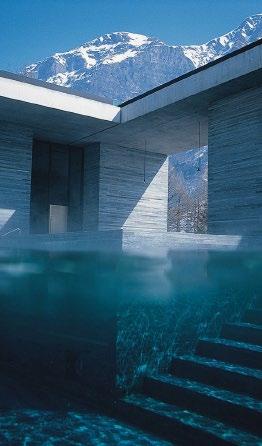
Busy commuters crowd the grand hall in the Grand Central Station in New York, as they are supposed to. But when you enter, why does it seem like time almost comes to a stop? The scale of the environment is built to be engulfing and captivating, begging you to experience it. 3

300 Atlas of the Destruction of Aesthetics finally, previously, meanwhile ...
Aamodt, Mette. “NY Grand Central Station.” Slow Space, 26 Mar. 2017, www.slowspace. org/metaphysics-time-space-and-architecture/.
Peter Zumthor’s The Therme Vals in Switzerland fully embraces this quality of architecture. The spa/hotel complex is a “cave/quarry-like structure” almost submerging into the hillside. On the interior, the stones are meticulously crafted and designed to create a complete sensory experience. Even the negative spaces between blocks are placed in a way that gives visitors a pulsating rhythm when walking past them. 4

As time and space are intimately connected, spatial manipulation results in a change in temporal perception as well. Time seems faster or slower, accelerating or decelerating. Consequently, when we are engulfed in those spaces, we might feel that our emotions vary according to those conditions as well, whether positively or negatively.
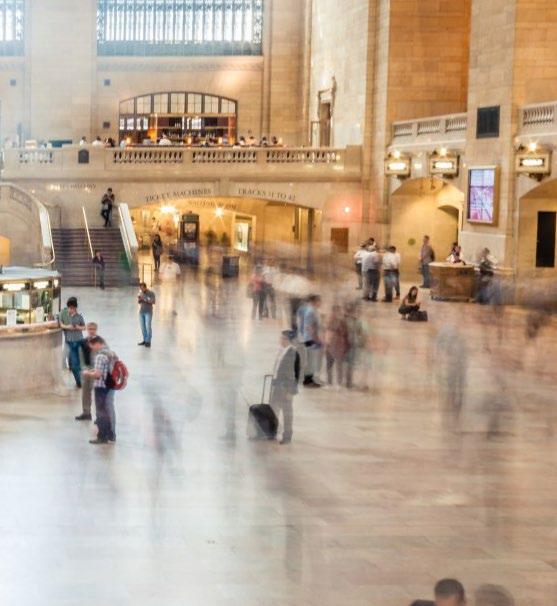

301 Atlas of the Destruction of Aesthetics finally, previously, meanwhile ...
Zumthor, Peter. “The Therme Vals.” ArchDaily, 11 Feb. 2009, www. archdaily.com/13358/the-therme-vals.
AESTHETICS OF TIMELESSNESS
It is somewhat agreeable that the feeling of not being restricted by time can be very pleasant and appealing- an aesthetic of timelessness. Throughout history, there had been several breakthroughs regarding this concept, mainly brought up by the invention of new technologies.


During the industrial revolution, the invention of mass production had launched tremendous amounts of products into the market. As demand needed to amount to supply, consumerism rose. In Beatriz Colomina’s “Unbreathed Air 1956,” 5 she described the theme of consumerism as well as the representation of concepts induced by the movement. In 1956, “House of the Future (H.O.F.),”
an architectural installation by The Smithsons, makes use of various means of artistic expression like materials, objects and spaces utilized in inventive ways. Back then, plastic was a relatively new construction material. Its fascinating malleability characterizes this house, promoting a sense of continuity and transitoriness throughout. First, by joining the wall and the floor in one curved angle using plastic sheets. Then, the iconic retro chairs:

1- “Pogo” chairs - steel, transparent perspex
2- “Egg” chairs - glassreinforced plastic
3- The “Petal”reinforced polyester resins
4- The “Saddle”reinforced polyester resins
302 Atlas of the Destruction of Aesthetics finally,
...
previously, meanwhile
1 2 3 4
Prieto, Maria. “Oase 75 203 Houses of the Future.” Slideshare, 20 Sept. 2018, www. slideshare.net/MariaPrieto/oase-75-203houses-of-the-future.
Alter, Lloyd. “House of the Future.” Treehugger, 28 May 2020, www.treehugger. com/look-alison-smithsons-house-future-4858335.
In “Parallel of Life and Art,” a preceding exhibition in 1953 by The Smithsons in cooperation with Nigel Henderson and Eduardo Paolozzi, images of archaic objects were strategically placed on the floors, walls and roofs creating an immersive enclosure-- “the exhibition material becoming itself the means of spatial organisation.” 6 Immersiveness of space once again reinforces the transitoriness of space and its visitors.
Aside from the materiality of their exhibitions, the ephemerality of the exhibition itself also contributes to the aesthetic of timelessness. The H.O.F. was an architectural mock-up, a canvas for advertising futuristic objects by painting a picture of the domestic ideals that come and go. The charm of “staged architecture” is that they are meant to live in the moment, but also create an everlasting memory. “...the transient enjoyably consumed, creating the taste for the permanent.” 7


303 Atlas of the Destruction of Aesthetics finally, previously, meanwhile ...
Henderson, Nigel. “Photograph of Installation View of Parallel of Life and Art Exhibition.” Tate, 1992, www.tate.org.uk/art/archive/items/tga9211-5-2-79/henderson-photograph-of-installation-view-of-parallel-of-life-and-art-exhibition.
Foster, Norman. “Jaffe House (Skybreak House) | from A Clockwork Orange(1971).” Pinterest, www.pinterest.co.uk/ pin/100979216632495177/.
time is the fourth dimension of architecture time is the fourth dimension of architecture time is the fourth dimension of architecture

304 Atlas of the Destruction of Aesthetics finally, previously, meanwhile ...
In one of the most canonical architectural textbooks “Space, Time and Architecture: the Growth of a New Tradition,” Sigfried Giedeon argued that the gap between the progress in technology and the recess in human sensibility can actually be filled through drawing parallels in the field of physics and art. During the period where the theory of relativity which deals with the continuum of space and time was being developed, artistic movements such as cubism and futurism arose, dealing with the same exact subject. The common ground was simultaneity. Cubism and futurism proposed new ways of expressing perspectives simultaneously through multiple viewpoints, which was later apparent in architecture as well.



Construction technologies and artistic discoveries also walked hand in hand. Brought up by Giedeon, the term “Durchdringung” refers to [architecture’s] capacity to interrelate different aspects of space with one another. 8 For instance, the invention of glass facades used in Walter Gropius’ Fagus Factory exposes the stairwell inside, making them appear as if they were floating. The transparency of glass also allows outsiders to look at the building from multiple angles and receive many more perspectives than if they were opaque. Through interpolation of space, events that once can only be experienced one after another can now be experienced simultaneously.

305 Atlas of the Destruction of Aesthetics finally, previously, meanwhile ...
1 Giedeon, Sigfried. “Space, Time and Architecture: The Growth of a New Tradition.” Google Books, 1967, books.google.co.th/books/about/Space_ Time_and_Architecture_the_Growth_o.html?id=mSdkxAEACAAJ&redir_esc=y.
2 Picasso, Pablo. “The Reservoir, Horta De Ebro.” Medium, 22 Aug. 2019, medium.com/@ToddBrison/you-arent-lazy-or-untalented-your-environment-is-wrong-478725ecfdfa.
3 Boccioni, Umberto. “File:Development of a Bottle in Space MET DT6410.Jpg.” Wikipedia Commons, 10 Apr. 2017, commons.wikimedia.org/wiki/ File:Development_of_a_Bottle_in_Space_MET_DT6410.jpg.
Gropius, Walter. “Fagus-Werk in Alfeld.” Germany Travel, www.germany.travel/de/mediengalerie/gallery-detail-fagus-werk-in-alfeld.html.
Le Corbusier’s Saint Marie de La Tourette, a silent monastery nestled in the hills of Rhone Alpes, France exemplifies how space, light and order can work together to create an immersive yet secluded environment. Again, Durchdringung was illustrated through several architectural features: the semitransparency of the vertical brise-soleils, light-cannons made by strategically cut window openings, modulorcontrolled vertical divisions and most apparently, an interpolation of volumes all contribute to an aesthetical timelessness.9
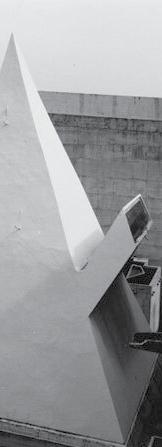
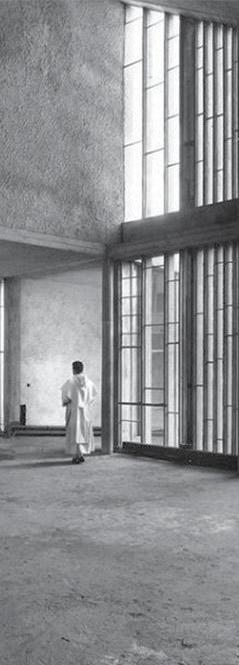


306 Atlas of the Destruction of Aesthetics finally, previously, meanwhile ...
Le Corbusier. “Sainte Marie De La Tourette.” ArchEyes, 24 Apr. 2019, archeyes.com/sainte-marie-de-la-tourette-le-corbusier/.
TIME AS..
INCREMENTS.

A LINEAR FLOW.
In an attempt to manipulate time, we manifest time-defying spaces, making time appear as either a linear flow or as increments, or increments forever in a linear flow.



308 Atlas of the Destruction of Aesthetics finally, previously, meanwhile ...
finally, previously, meanwhile ...
1 Diller and Scofidio + Renfro. “Slow House.” DS+R, dsrny.com/project/slow-house.
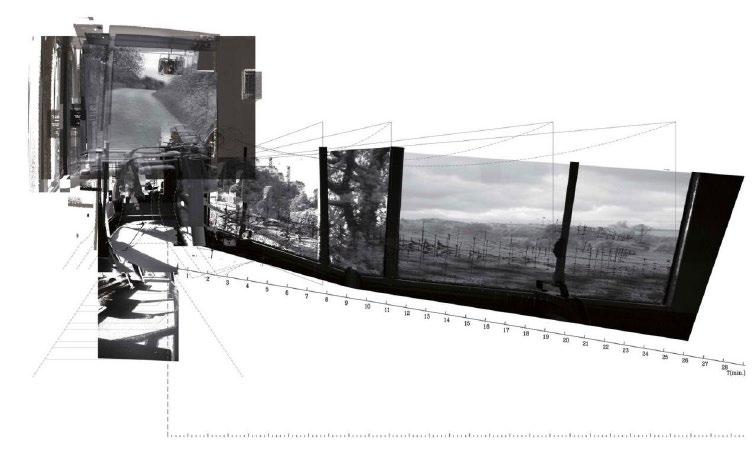

2 Colomina, Beatriz. “Slow House.” MIT Press, Jan. 2007, mitpress.mit.edu/books/domesticity-war.
3 “Layered Perspectives of the Slow House.” Achisharehub, 12 Jan. 2015, archisharehub. wordpress.com/2015/01/12/bartlett-school-ofarchitecture-ucl-students-works/.
309 Atlas of the Destruction of Aesthetics
TEMPORAL MANIPULATION
In 1989, Diller Scofidio+Renfro built the “Slow House” in hopes to elevate the precious sea view of Long Island, USA. The house was structured quite simply, as many put it: “a passage from a door to a window.” The long curved exterior suggests a linear navigation from an entrance- a giant rotating door to an exit- a giant picture frame window. Two antennae stuck out from the end of the building, one as a chimney and the other as a camera apparatus-for the sea view to be livestreamed on a monitor on the picture frame window. Residents can choose which time of the day they want to see: “day played back at night, fair weather played back in foul.” 10
However, more intriguing is the methodology behind building this house.
As the objective of this building is to enhance the view and maximize the angle in which it can be looked at, a modelled segmentation of the building reveals a departure from concavity slowly broadening into a climactic sea view. Conceptually, the building needed to be spliced up so that a flow could be created. Therefore, the house itself resembles a series of segments adding up to a gradual linear flow in both space and time.
How do we begin to disrupt this flow?
If we imagine the entrance as the beginning of a narrative, the exit as the end, we can systematically rearrange the segments, which would then warp the building’s spatial and durational qualities.
310 Atlas of the Destruction of Aesthetics finally, previously, meanwhile ...
Linear Structure
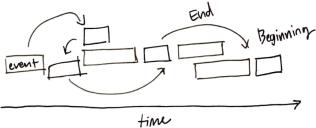

Circular Structure


Sporadic Structure
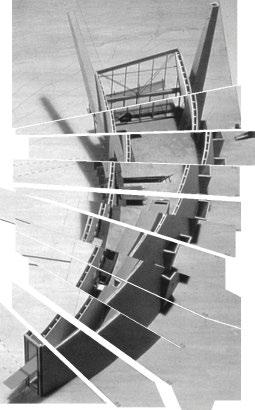

311 Atlas of the Destruction of Aesthetics finally, previously, meanwhile ...
In order to visualize temporal manipulation, we need to address that time can only be grasped if it is incremental. Again, we only understand time through events. Freeze framing scenes and sequencing them into an event make us register it as a moving picture. Then, that realization leads to an automatic reaction of stitching together a narrative. So visually, frames compose events and events compose narratives. This awareness also exists in architectural representation. It is always
helpful to incorporate notions of time into drawings and diagrams in order to more vividly tell a user experience. For example, a section drawing of the building in daytime in comparison to nighttime.
Bernard Tschumi’s “The Manhattan Transcripts” deliberately extrapolates on this topic. The drawings demonstrate an architectural interpretation of reality. Tschumi splits up reality into three parallel planes: event, space and movement in an attempt to reconcile them in a new way.
Fabrizi, Mariabruna. “‘The Set and the Script’ in Architecture.” Socks Studio, 13 Oct. 2015, socks-studio.com/2015/10/13/the-set-and-thescript-in-architecture-the-manhattan-transcripts1976-1981-by-bernard-tschumi/.

312 Atlas of the Destruction of Aesthetics finally, previously, meanwhile ...
Tschumi, Bernard. “The Manhattan Transcripts.” Amazon, 29 Apr. 1994, www.amazon.com/ Manhattan-Transcripts-Bernard-Tschumi/ dp/1854903810.


313 Atlas of the Destruction of Aesthetics finally, previously, meanwhile ...
Diagramming Space-Time Through Daily Life Events
For my personal research, I took two sets of photos of daily life events: cooks at a grilling station in a buffet restaurant and cars at a pick-up spot under a skytrain station. Both of the events involve a lot of movements at different scales. Implementing a similar rule to The Manhattan Transcripts, I first laid the scenes out in sequential order. Secondly, I extracted the plan of the space. Lastly, I zoomed in on the effects of the moving subjects on the space.
314 Atlas of the Destruction of Aesthetics finally, previously, meanwhile ...






315 Atlas of the Destruction of Aesthetics finally, previously, meanwhile ...
19:47
19:48 A B C
Diagram 1: Grilling Station @ Copper Buffet
Circular Structure











B319 Atlas of the Destruction of Aesthetics finally, previously, meanwhile ...
ASTART END
Sporadic Structure



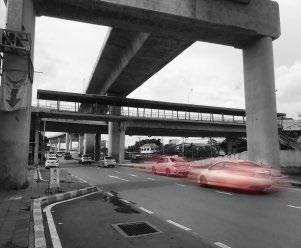



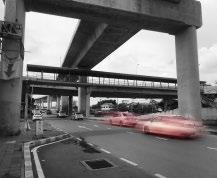
320 Atlas of the Destruction of Aesthetics finally, previously, meanwhile ... START END A B
The order of the photos is then scrambled, following different narrative structures that require incrementing: circular and sporadic. Here, we can see that time is laid out in a way that seems like increments rather than a single linear flow. By using this knowledge, we can begin to conclude that a simple reorganization of time can potentially result in a reorganization of space as well, due to the different movements created. Time and space, then appear less restrictive than we presumed them to be.
321 Atlas of the Destruction of Aesthetics finally, previously, meanwhile ...
REFERENCES
1 Rose, Frank. The Art of Immersion: Why Do We Tell Stories? 3 June 2017, www. wired.com/2011/03/why-do-we-tellstories/.
2
“The Fundamentals of Space-Time: Part
1 - Andrew Pontzen and Tom Whyntie.” TED, TED-Ed, 24 Mar. 2014, ed.ted. com/lessons/the-fundamentals-ofspace-time-part-1-andrew-pontzen-andtom-whyntie.
3
By, Post, et al. “The Metaphysics of Time, Space, and Architecture - Slow Space Blog.” Slow Space, 19 Mar. 2019, www.slowspace.org/metaphysics-timespace-and-architecture/.
4
O’Grady, Elena. “The Therme Vals / Peter Zumthor.” ArchDaily, ArchDaily, 11 Feb. 2009, www.archdaily.com/13358/ the-therme-vals.
5
Colomina, Beatriz. “Unbreathed Air 1956.” Grey Room, vol. 15, 2004, pp. 28–59., doi:10.1162/1526381041165458.
6-7
Highmore, Ben. “Rough Poetry: Patio and Pavilion Revisited.” Oxford Art Journal, vol. 29, no. 2, 2006, pp. 269–290., doi:10.1093/oxartj/kcl005.
8 Heynen, Hilde. Architecture and Modernity: a Critique. MIT, 2000.
9
“Sainte Marie De La Tourette Convent by Le Corbusier.” ArchEyes, 21 Sept. 2020, archeyes.com/sainte-marie-de-latourette-le-corbusier/.
10
“Slow House.” DS+R, dsrny.com/project/ slow-house.
322 Atlas of the Destruction of Aesthetics finally, previously, meanwhile ...
323 Atlas of the Destruction of Aesthetics finally, previously, meanwhile ...



























































































